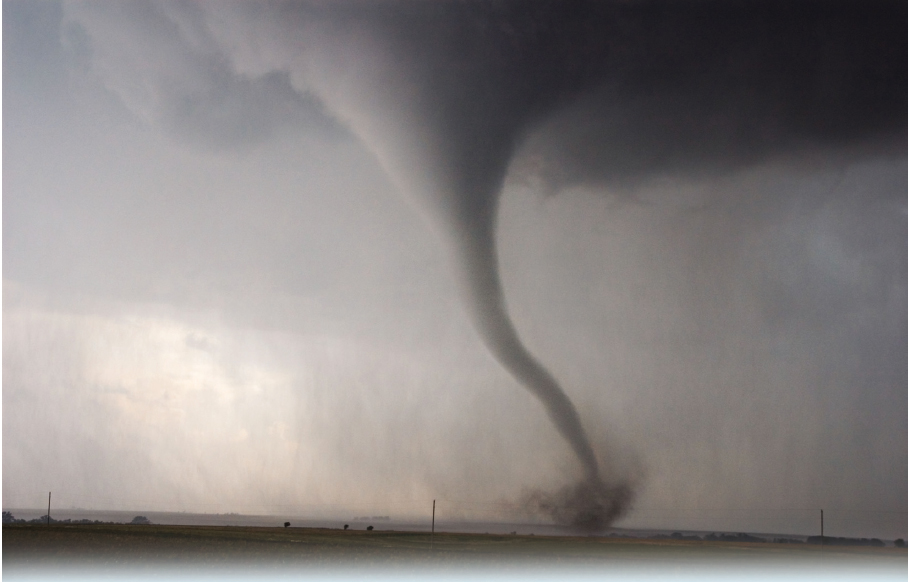973
- 15.1Vector Fields
- 15.2Line Integrals
- 15.3Fundamental Theorem of Line Integrals
- 15.4An Application of Line Integrals: Work
- 15.5Green’s Theorem
- 15.6Parametric Surfaces
- 15.7Surface and Flux Integrals
- 15.8The Divergence Theorem
- 15.9Stokes’ Theorem
- Chapter Review
- Chapter Project

Modeling a Tornado
Most people who live in the wide stretch of land between the Appalachian Mountains in the east and Rockies in the west are familiar with intense supercell thunderstorms and the tornadoes they produce. Though tornadoes are known to form in every state, and on every continent (with the exception of Antarctica), the unique geographical and meteorological characteristics of Tornado Alley make it an ideal breeding ground for these violent rotating columns of air. Warm moist air from the south is forced upward by fast moving cold, low pressure systems from the north and west and mixes with cold, drier air at higher altitudes, producing strong shearing winds that begin to rotate in a counterclockwise direction. As the wind increases it sucks up more moist air, forming a funnel-like vortex.
Climatologists and meteorologists are working to develop mathematical models to predict tornadoes and to better understand their behavior. And though several models have been proposed, no single reliable mathematical model exists.
CHAPTER 15 PROJECT
The Chapter Project on page 1056 investigates a model for measuring the wind in a tornado.
Vector calculus is the culmination of what we have learned throughout the course. Those of you who are studying engineering or science will find the theory and methods of vector calculus rich in engineering applications. For example, line integrals can be used to find the work done by a variable vector force and to find the mass of a curved wire that has variable density. Surface integrals are used to measure the flow of a fluid across a surface.
We also discuss three important theorems that simplify integration and generalize the Fundamental Theorem of Calculus.